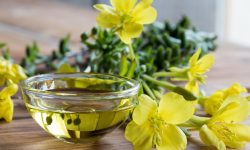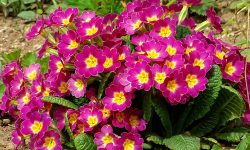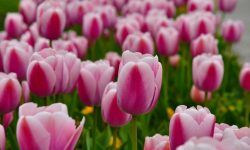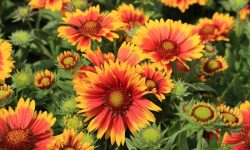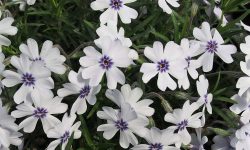Hyacinths are the essence of spring—bursting into bloom with rich colors and a fragrance that stirs memories and awakens the senses. But for many gardeners, timing their bloom just right can feel like unlocking a seasonal secret. Whether you’re in a chilly northern zone or a warm southern garden, understanding when hyacinths bloom is the key to a breathtaking spring display.
In this guide, you’ll discover how climate shapes hyacinth blooming time and learn expert tips to help your flowers thrive. From cold-hardy techniques to warm-weather hacks, you’ll have everything you need to turn your garden into a fragrant masterpiece—where every bloom tells the story of perfect timing.
Understanding the Hyacinth Bloom Cycle
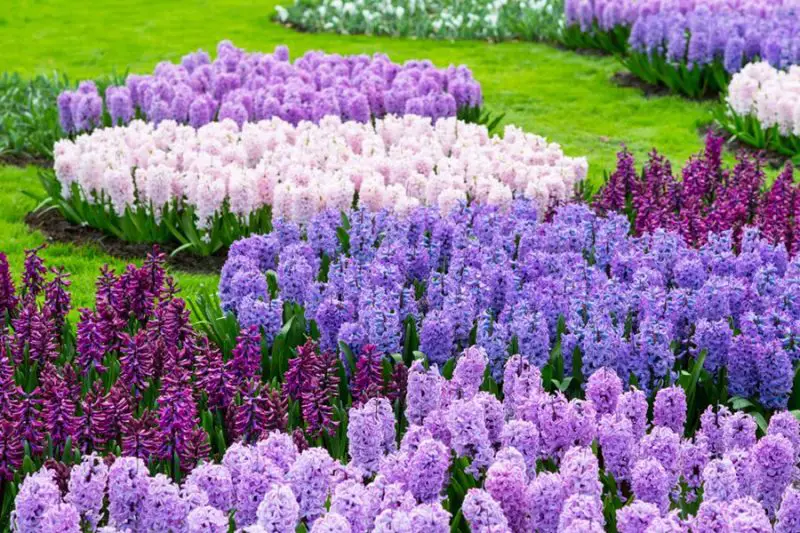
From Dormancy to Bloom
Hyacinths begin their growth journey in a period of deep dormancy. Planted in autumn, the bulbs settle into the soil as temperatures drop. This dormant phase isn’t a sign of inactivity but rather a crucial transition, allowing the bulb to undergo vernalization—a chilling process that primes the flower bud hidden within. The cold period, ideally between 35°F and 48°F (1.5°C to 9°C), is essential to break internal dormancy and trigger the hormonal changes required for blooming.
As winter recedes and the soil begins to warm, hyacinths respond rapidly. The energy stored within the bulb fuels the emergence of lush green shoots, soon followed by tightly packed flower spikes. These spikes, often among the earliest signs of spring, carry dozens of small, bell-shaped florets that gradually open in sequence, releasing their signature sweet fragrance. The transition from dormancy to bloom is a carefully timed biological rhythm, finely tuned to seasonal cues.
Typical Bloom Period
In regions with temperate seasons, hyacinths typically bloom from mid-March to early April, creating a splash of color during the often gray and unpredictable days of early spring. However, their blooming time is far from uniform and varies due to several factors.
Higher elevations or northern zones may experience delayed blooming, with flowers not appearing until late April or even early May if snow cover persists. Conversely, in lowland or coastal areas with milder winters, hyacinths may awaken early and begin blooming by late February or early March. Urban microclimates, where pavement and buildings retain heat, can also push bloom time forward by a few days.
The cultivar you choose plays a role too. Early-flowering varieties tend to bloom before others even in the same climate. Additionally, unseasonal temperature fluctuations—such as an unexpected warm spell followed by a cold snap—can disrupt blooming, causing flower buds to form prematurely or suffer damage. Monitoring your local weather patterns and selecting the right variety for your region ensures a more predictable and rewarding bloom experience.
Blooming Time by Climate Zone
Hyacinths in Cold Climates (Zones 3–5)
In colder climates, hyacinths perform exceptionally well thanks to the deep, extended winter chill. These natural conditions provide all the necessary chilling hours for the bulbs to break dormancy and develop strong flower spikes. Gardeners should plant bulbs in mid to late fall, around 4 to 6 weeks before the first hard frost, to allow roots to establish before the ground freezes.
Snowfall in these zones acts like a protective blanket, insulating the bulbs from temperature fluctuations. Hyacinths typically bloom from early to mid-April, but in areas with heavy snowpack or higher elevation, blooming can be delayed until late April or early May. While the season may start later, the cool spring air extends the life of the flowers, giving gardeners a longer window to enjoy their beauty and fragrance.
Hyacinths in Temperate Climates (Zones 6–7)
Zones 6 and 7 are considered the sweet spot for hyacinths. Winters are cool enough to naturally meet the chilling requirement, and springs are gradual, which supports balanced growth. Plant bulbs in late October or early November so they have time to root before dormancy sets in.
Hyacinths in these regions typically bloom between mid-March and early April, depending on weather fluctuations. Because the conditions are just right, bulbs planted in the ground can often return year after year with minimal maintenance. Gardeners in these zones can enjoy consistently vibrant and fragrant blooms without the need for pre-chilling or special care.
Hyacinths in Warm Climates (Zones 8–9)
In zones 8 and 9, the main challenge is the lack of sufficient winter cold. Without enough chilling hours, hyacinths may fail to flower or only produce leaves. To ensure proper blooming, bulbs must be refrigerated for 10 to 12 weeks, starting in early fall. After chilling, plant bulbs in December or early January, before outdoor temperatures begin to rise too quickly.
With proper preparation, hyacinths in warm climates bloom from late February to March. However, the warmer weather often causes flowers to fade faster. For best results, plant in partially shaded spots or use mulch to moderate soil temperatures. Most gardeners in these zones treat hyacinths as annuals, replanting chilled bulbs each year for a reliable spring display.
Hyacinths in Hot Climates (Zone 10 and Above)
Hot, tropical, or subtropical climates are not naturally suitable for growing hyacinths. The warm winters and high soil temperatures prevent proper bulb development and dormancy. To grow hyacinths successfully here, gardeners must pre-chill the bulbs for at least 12 weeks in a refrigerator before planting in mid to late January.
Because the soil warms up quickly in these zones, hyacinths are best grown in containers, which allow for better control over temperature and drainage. Move containers to shaded areas once blooms appear to help prolong flower life. Expect blooming in late February or early March, but be prepared for a shorter display. Since bulbs rarely rebloom in hot climates, most growers discard them after flowering and start fresh the next season.
Factors That Influence Hyacinth Blooming
Chilling Hours Requirement
Hyacinths are classified as cold-requiring bulbs, meaning they must experience a certain amount of cold to bloom properly. Specifically, they need 10 to 14 weeks of temperatures between 35°F and 48°F (1.5°C to 9°C) to initiate flower development inside the bulb. This period of vernalization resets the bulb’s biological clock and triggers floral growth instead of just foliage.
In colder zones, this chilling occurs naturally during winter. However, in warm climates where winter temperatures stay mild, gardeners must artificially chill the bulbs in a refrigerator. Without sufficient chilling, the bulbs may sprout green leaves but fail to produce a flower stalk, leading to disappointing results. Ensuring the bulbs receive adequate chilling is often the most critical step in achieving successful blooms.
Planting Time and Depth
Timing is key when planting hyacinth bulbs. If planted too early, especially in regions with warm autumns, bulbs may begin sprouting prematurely before winter dormancy sets in. This exposes the tender shoots to cold damage. Conversely, planting too late might not give bulbs enough time to establish roots before the soil becomes too cold or frozen.
For best results, bulbs should be planted 4 to 6 weeks before the ground freezes, typically in mid to late fall, depending on your zone. The ideal planting depth is 4 to 6 inches beneath the soil surface, with the pointed end facing up. This depth protects the bulb from temperature extremes while anchoring it firmly for vertical growth during blooming. Proper timing and depth also ensure the roots can absorb nutrients and moisture efficiently throughout winter and into spring.
Soil Conditions and Drainage
Hyacinths are particularly sensitive to soil that holds excess moisture. Good drainage is essential to prevent rot, which is one of the most common reasons bulbs fail to bloom or die before flowering. The best soil for hyacinths is light, sandy, or loamy, allowing water to pass through quickly while retaining just enough moisture for root development.
Heavy clay soils or areas that retain water should be amended with compost, coarse sand, or peat moss to improve structure and aeration. Raised beds and containers are excellent alternatives in regions with poor drainage. During winter, saturated soil can lead to fungal infections or cause bulbs to decay, resulting in either stunted growth or no flowers at all. Ensuring well-drained soil is one of the simplest yet most effective ways to protect your blooms.
Sunlight and Location
Light is another important factor influencing hyacinth blooming. In cooler climates, hyacinths benefit from full sun exposure, which helps warm the soil more quickly in early spring, encouraging earlier and more uniform blooming. At least 6 hours of direct sunlight daily is ideal for promoting healthy flower stalks and vibrant color.
In warmer or sunnier climates, however, intense afternoon sun can shorten the bloom duration and cause flowers to fade quickly. In these zones, it’s better to plant hyacinths in spots that receive morning sun and afternoon shade, especially if temperatures rise quickly in spring. South- or east-facing beds offer the perfect compromise, delivering warmth and light without overheating the plants. Choosing the right location ensures the blooms reach their full potential and last as long as possible.
Tips to Ensure Timely and Vibrant Blooms
To get the most out of your hyacinths each spring, a few key practices can make a big difference in both timing and flower quality. First, always select firm, healthy bulbs from a reputable source. Bulbs that are soft or moldy are unlikely to produce strong blooms.
Ensure proper chilling by refrigerating bulbs for 10 to 12 weeks if you’re gardening in mild-winter climates. Place them in a breathable bag away from fruits like apples, which emit ethylene gas that can damage flower development.
When planting, space bulbs about 4 to 6 inches apart to prevent overcrowding, which can restrict air circulation and increase the risk of fungal issues. After planting, water thoroughly once to help settle the soil, then avoid overwatering during dormancy.
Apply a balanced, slow-release bulb fertilizer at planting time and again in early spring as shoots emerge. This supports strong root growth and vibrant flowers.
Finally, remove spent flowers promptly after blooming but allow the foliage to die back naturally. This helps the bulb store energy for the next season, ensuring reliable performance year after year.
Differences in Blooming Between Varieties
Early-Blooming Hyacinths
Early-blooming hyacinths are a gardener’s signal that spring is truly underway. Varieties like ‘Delft Blue’ and ‘Pink Pearl’ not only bring vivid pastel tones to the garden but also thrive in cooler temperatures. These cultivars typically begin blooming in early to mid-March, even before many other spring flowers have awakened. Their ability to withstand late winter chills makes them perfect for northern zones or for forcing indoors to brighten late-winter windowsills. Gardeners eager for early fragrance and cheerful color often rely on these dependable varieties to kick off the blooming season.
Mid-Season Hyacinths
Mid-season hyacinths bridge the gap between early and late bloomers, offering a balanced burst of color and scent. Varieties such as ‘City of Haarlem’, with its soft yellow blooms, and ‘Gypsy Queen’, with its unique coral-pink hue, typically flower from late March through early April. These cultivars thrive in a wide range of climates and are especially valued for their rich perfume and sturdy flower spikes. Because they bloom during peak spring weather, they often perform reliably in garden beds, borders, and container displays. Their timing also makes them ideal companions to tulips and daffodils, creating layered springtime displays.
Late-Blooming Hyacinths
Late-blooming hyacinths are less common but can provide a delightful extension to the floral season. These varieties, which may bloom from mid-April into early May, are especially suited for warmer climates where early bloomers might fade too quickly. While fewer cultivars fall into this category, those that do tend to offer a more gradual opening process, with flowers that last longer under moderate spring temperatures. Their extended bloom period makes them valuable for gardeners aiming to maintain color throughout the spring. Late-blooming hyacinths can also fill the floral gap before early summer perennials take center stage.
Extending the Bloom Season
Staggered Planting
To make the most of hyacinths’ short-lived beauty, consider planting in phases throughout the fall. Start with early-blooming cultivars like ‘Pink Pearl’ or ‘White Festival’, followed by mid-season varieties such as ‘Delft Blue’, and end with late-bloomers like ‘City of Haarlem’. This technique not only lengthens the flowering window but also creates a natural-looking wave of color progression in your beds or borders. In regions with mild winters, this staggered timing can turn a single week of bloom into a captivating month-long showcase.
Companion Planting
Combining hyacinths with other early spring favorites enhances both aesthetic appeal and garden function. Daffodils and tulips share similar growing conditions, making them ideal partners. As hyacinths fade, these companions continue to bloom, maintaining visual interest. Additionally, the larger, leafy foliage of daffodils can help conceal yellowing hyacinth leaves, preserving the garden’s charm. For even more impact, add low-growing ground covers like grape hyacinths (Muscari) or pansies to fill gaps and support pollinators early in the season.
Growing in Containers
Hyacinths thrive in containers, offering a versatile solution for those with limited space or unpredictable spring weather. Use well-draining potting mix and containers with good drainage holes. In cooler climates, pots can be started in a sheltered spot and later moved into full sun for best bloom. In warmer zones, moving containers to dappled shade after flowering begins can help blooms last longer. Container-grown hyacinths are also perfect for indoor forcing—chilled bulbs brought into warmth will reward you with fragrant blossoms weeks before the outdoor show begins, adding cheer to winter windowsills.
Common Blooming Problems and Solutions
No Blooms After Planting
If your hyacinths fail to bloom after planting, the issue often lies in temperature exposure and bulb quality. These bulbs require a proper chilling period—typically around 10 to 14 weeks at temperatures between 35°F and 48°F (1.5°C–9°C)—to initiate flower development. In warmer climates where winters aren’t cold enough, skipping this step will prevent flowering entirely. Make sure to purchase pre-chilled bulbs if you live in USDA zones 8–10 or chill them yourself in the refrigerator, away from ripening fruit like apples that emit ethylene gas and can damage the flower embryo. Also, avoid planting soft, moldy, or shriveled bulbs, as these rarely produce flowers even under ideal conditions.
Weak or Sparse Blooms
Sparse or undersized flower spikes are often a sign of stress during the growing phase. One common culprit is low-quality soil that lacks key nutrients, especially phosphorus and potassium, which are essential for bud formation. A lack of sunlight—especially in shaded or north-facing gardens—can further weaken bloom performance, as hyacinths need full sun to partial shade to thrive. Additionally, overwatering or consistently wet soil may limit oxygen flow to the roots, weakening overall plant vigor. To support better blooming, plant in a sunny, well-draining spot and feed with a balanced or bloom-boosting fertilizer in early spring. Refrain from applying too much nitrogen, which favors lush leaves over flowers.
Bulb Rot
Hyacinths are highly susceptible to bulb rot, particularly when grown in heavy clay or poorly draining soils. Standing water can suffocate bulbs and encourage fungal infections such as Fusarium or botrytis. Signs of rot include foul smells, mushy bulbs, or soft basal plates where roots should emerge. To prevent this, amend the planting area with sand, perlite, or compost to promote drainage, or plant bulbs in slightly raised beds or containers if soil conditions are poor. If you suspect rot, remove and destroy infected bulbs promptly to prevent the spread to neighboring plants. Going forward, allow the soil to dry slightly between waterings and avoid soaking the bulbs.
Regional Blooming Guide Summary
Northern US and Canada
Expect hyacinth blooms from early to mid-April. The long, cold winters provide excellent chill hours, which are crucial for bulb development. Cooler spring temperatures help the blooms last longer and stay vibrant. Gardeners in this region often enjoy some of the most fragrant and colorful hyacinth displays. For best results, plant bulbs in sunny, well-drained spots and apply mulch to regulate soil temperature as the season changes.
Midwest and Northeast US
Blooming typically occurs from mid-March to early April. While this region supports healthy hyacinth growth, sudden late-season frosts can pose a threat to early buds. To protect emerging shoots, apply a thick layer of mulch in late winter and avoid planting in frost pockets. Choosing a sheltered location near a wall or fence can help buffer temperature fluctuations and extend bloom longevity.
Southern US
With pre-chilled bulbs, blooms can begin as early as late February. However, because spring arrives quickly and temperatures rise fast, the bloom period is generally shorter. To maximize floral performance, plant bulbs in partial shade and keep the soil evenly moist. Early planting in well-drained beds is essential, and removing spent flowers quickly may help bulbs conserve energy.
Coastal and Pacific Northwest
This region’s moderate winters and mild springs support lush hyacinth blooms from late March to mid-April. Consistent rainfall can cause bulb rot if the soil doesn’t drain well, so raised beds or sandy loam are highly recommended. Overcast days often extend the bloom period and help preserve flower color and scent. Regular deadheading encourages tidiness and prevents energy from going into seed production.
Tropical and Subtropical Areas
Hyacinths must be treated as annuals here, as warm winters do not provide the necessary chill hours for natural dormancy. By pre-chilling bulbs in the refrigerator for 10–12 weeks before planting, gardeners can mimic temperate conditions and coax the bulbs into blooming. Expect short-lived but stunning floral displays in late winter or early spring. Plant in containers for best control over temperature and moisture, and discard bulbs after bloom, as re-flowering is rarely successful in these climates.
Caring for Hyacinths After Blooming
Deadheading Flowers
After your hyacinths finish blooming, promptly remove the spent flower stalks by cutting them at the base. This prevents the plant from wasting energy on seed production and directs nutrients back into the bulb. However, never cut the green leaves at this stage—these are crucial for energy absorption through photosynthesis, which fuels the bulb for next year’s blooms. Regular deadheading also helps maintain a neat garden appearance.
Allowing Foliage to Die Back Naturally
Patience is key when caring for hyacinths after flowering. The foliage may not be the most attractive part of the plant, but it plays a vital role in future growth. Leave the leaves in place until they turn fully yellow and wilt on their own. This natural die-back process allows the bulbs to reabsorb nutrients and strengthen for the following season. You can hide the fading leaves by surrounding them with other perennials or groundcovers if appearance is a concern.
Digging and Storing Bulbs
In warmer regions where summer soil stays moist or where replanting is needed, lift the bulbs about six weeks after blooming—once the foliage has completely died back. Gently brush off any excess soil, allow them to dry for a few days in a shaded, well-ventilated area, and store them in a paper bag or mesh container in a cool, dry, dark place until autumn. In colder zones with well-drained soil, hyacinths can be left in the ground to naturalize. Just ensure they won’t be disturbed by excessive summer rain, which can lead to rot. Regular inspection and occasional division every 3–4 years help maintain strong flowering.
FAQ About When Hyacinths Bloom in Different Climates
What month do hyacinths typically bloom?
Hyacinths usually bloom in March or April, depending on your climate. In warmer zones (like USDA Zones 8–9), they may bloom as early as late February. In cooler regions, blooming can extend into late April. The exact timing depends on when the bulbs experienced their necessary chilling period and the local spring temperatures.
How long does a hyacinth stay in bloom?
Each hyacinth bloom typically lasts 1 to 2 weeks. However, bloom time can be extended slightly with cooler weather and proper care, such as keeping them out of direct harsh sunlight and ensuring consistent moisture. Indoor-forced hyacinths might bloom for a shorter period due to artificial conditions.
Can I make my hyacinths bloom again the next year?
Yes, hyacinths can bloom again the following year if cared for properly after flowering. It’s crucial to allow the leaves to die back naturally and provide the bulbs with enough nutrients and rest. While forced indoor bulbs may not rebloom reliably, outdoor hyacinths can naturalize and return annually if left undisturbed in well-drained soil.
Why didn’t my hyacinths bloom this spring?
Several reasons can cause hyacinths not to bloom, including insufficient chilling, overcrowded bulbs, premature foliage removal, or excessively wet soil leading to rot. Ensure your bulbs are planted in well-draining soil, spaced properly, and receive at least 12–14 weeks of cold temperatures before spring.
Do hyacinths bloom more than once a year?
No, hyacinths are once-a-year bloomers, with their floral display happening in early to mid-spring. After blooming, the plant enters a foliage stage, then dormancy. Although you can grow new plants from bulb offsets or seeds, a single bulb will only bloom once per year under normal growing conditions.
Conclusion
Understanding when hyacinths bloom in different climates is essential to getting the most from these enchanting spring flowers. Whether you’re gardening in a frosty northern zone or a balmy southern one, timing your planting and meeting their chilling requirements is the key to success. With the expert tips in this guide, you can create a colorful, fragrant display that marks the arrival of spring with style and elegance.

